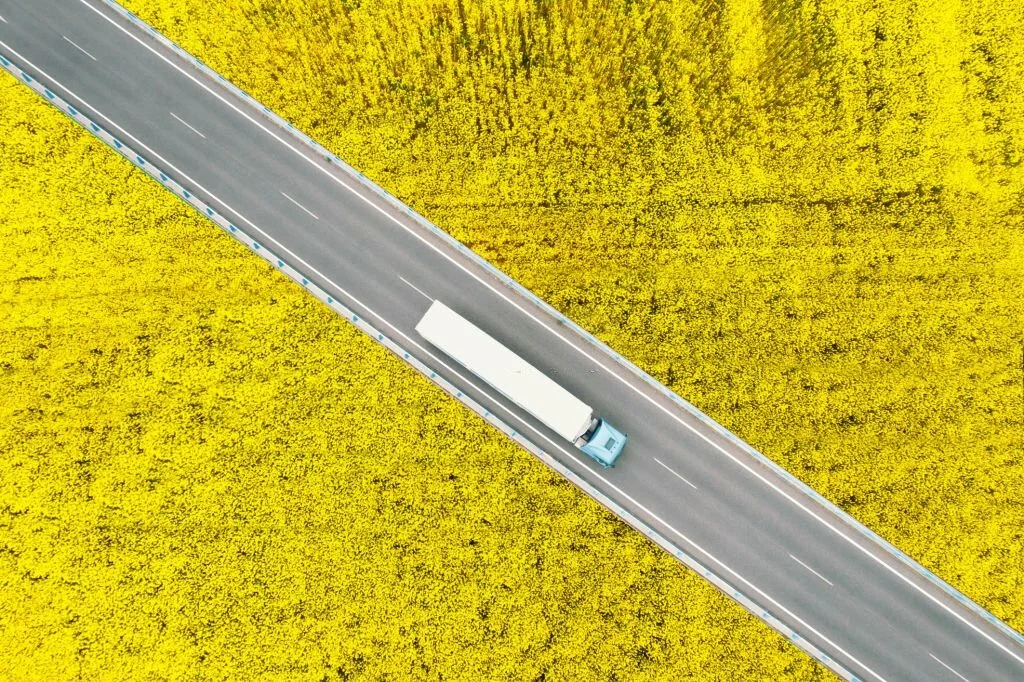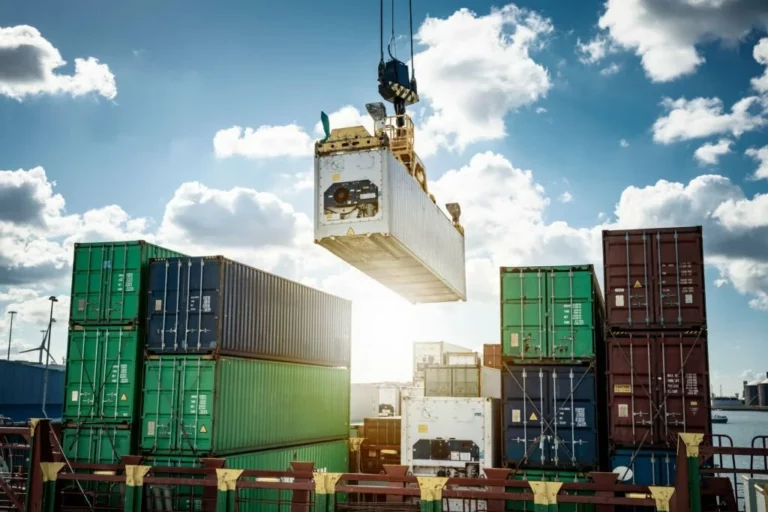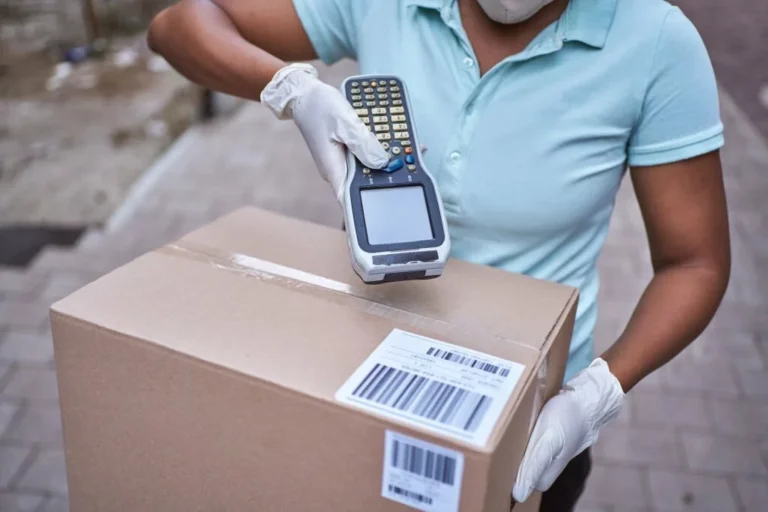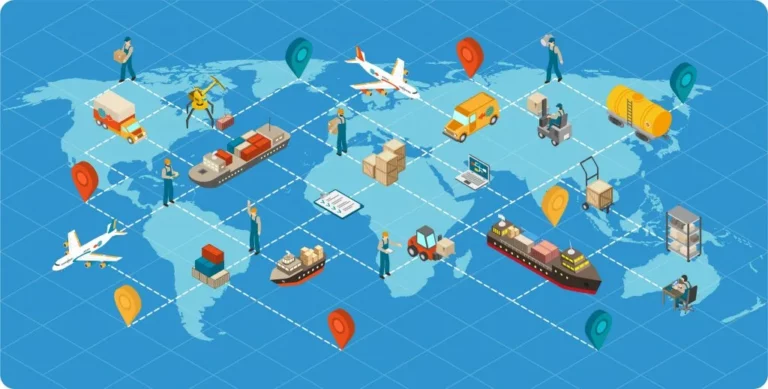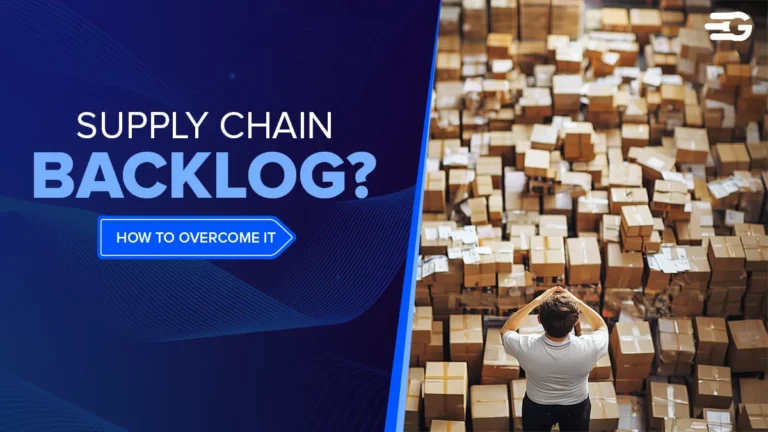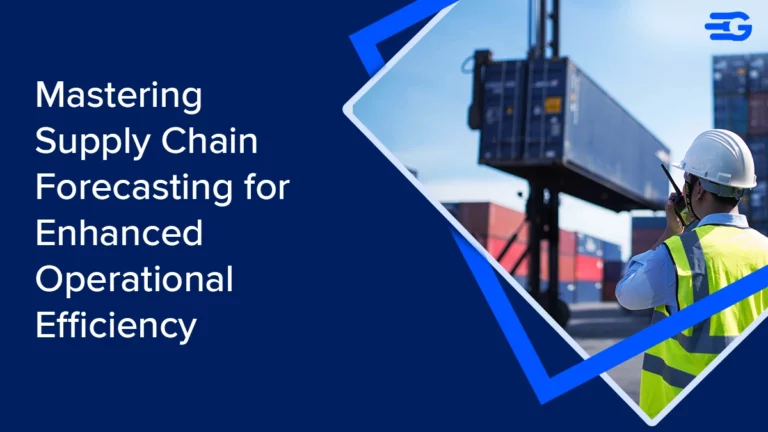The Critical Role of Last Mile Delivery in B2B Logistics
Customer expectations for online deliveries have grown in today’s fast-paced business world. According to Jungle Scout’s Consumer Trends Report from July 2021, a staggering 41% of consumers expect their online orders to be delivered within two to three days, with an even larger portion of 27% demanding the convenience of same or next-day delivery. Businesses now have a shorter window of time to complete orders, which puts tremendous strain on supply chains and logistics.
This is the situation where last-mile delivery becomes relevant. It indicates the last leg of the delivery route, which involves moving goods from the warehouse or distribution center to the doorstep of the final business client. Even though it’s frequently disregarded, last mile delivery is essential to B2B logistics success. Inefficiencies at this critical point have the power to disrupt entire supply chains, resulting in stockouts, delays, and eventually disgruntled consumers.
There is no denying the need of solving last-mile delivery concerns. This blog explores this important B2B logistics topic in more detail. We’ll go over the issues that companies deal with, the interesting new developments that are changing the game, and the best strategies you can use to improve last-mile delivery and obtain a competitive advantage.
What is the problem of ‘Last Mile Delivery’?
Imagine a well-thought-out supply network that moves goods from factories to distribution centers with efficiency. But what if there’s one last hitch? That is the main issue with last-mile delivery.
Last-mile delivery refers to the final leg of a product’s journey, getting it from a warehouse or distribution center directly to the end customer’s location. Particularly in a B2B setting, this seemingly straightforward procedure can be very complicated. Long-distance bulk transportation may be more efficient, but the final mile presents additional difficulties.
The Economic Impact of Last Mile Logistics
In the grand scope of supply chains, last-mile delivery may seem like a small detail, but its economic importance cannot be denied. It is, on the one hand, a major cost driver. Because last-mile deliveries are dispersed, economies of scale are lost, which raises the cost of fuel, driver compensation, and vehicle upkeep. These expenses are further increased by deliveries that fail because of lost connections or inaccurate addresses.
But cost savings isn’t the only economic benefit of effective last-mile delivery. Companies that are able to optimize this process see a series of benefits. Improved inventory management, fewer stockouts, and happier customers are all correlated with faster deliveries. This eventually improves a company’s bottom line by increasing sales and client loyalty. Furthermore, the economy as a whole may benefit from efficient last-mile logistics. Businesses may reduce pollution and traffic jams by using alternative fuel cars and route optimisation. This helps the environment and saves money on societal expenses related to air quality problems and traffic congestion.
Challenges of Last Mile Delivery for Businesses
Getting goods to a customer’s door via last-mile delivery, which seems like a straightforward task, but can turn into a logistical headache for companies. Effectively managing the initial phases of the supply chain is essential, but organizations frequently encounter difficulties in the last mile. Here, we have two main obstacles to overcome that could have a big effect on revenue and client satisfaction:
Navigating Urban Logistics
There are many obstacles in the way of last-mile delivery in urban settings. Urban delivery involves navigating a complex system of clogged streets, few parking spaces, and tall buildings on a daily basis.
One big waste of time is traffic congestion. Carefully planned routes are disrupted by stop-and-go traffic, which causes delays and irritated drivers. It is more difficult to find parking in busy city centers, which prolongs delivery times and uses more fuel. Similarly, large business structures can be difficult to navigate. Inefficiencies can be caused by complicated layouts, various delivery points inside a single structure, and restricted access hours.
So how can companies get through this urban web? Technology is really important. Plotting the most efficient delivery routes can be aided by using route optimisation software that takes into account real-time traffic data. Some of the load can also be reduced by looking into alternate delivery choices like specific pick-up sites or collaborating with neighborhood delivery firms that are experienced with urban environments. In the end, a good strategy combines technology, strategic planning, and maybe even original ideas, such as using smaller, more agile vehicles to get around confined locations.
Addressing Cost Management
There is a lot of pressure in the last-mile delivery industry to keep expenses under control. Last-mile deliveries need multiple separate trips, each with its own fuel expenditure, driver compensation, and vehicle wear and tear, in contrast to bulk shipments where economies of scale result in cost savings. Failed deliveries resulting from lost connections or wrong addresses drive up these costs even more and necessitate further attempts.
Thankfully, there are methods for controlling these costs. Softwares for route optimisation is crucial in this situation. Businesses can reduce fuel consumption and driver hours by strategically scheduling deliveries to minimize travel lengths and eliminate backtracking. Furthermore, investigating different delivery strategies may be more affordable. Delivery processes can be streamlined by using locker systems or specified pick-up sites, particularly for smaller products. By collaborating with local delivery providers of the area, businesses can take advantage of their knowledge and possibly cut down on overall costs. In order to maximize efficiency for each last-mile delivery, a good cost-control strategy ultimately necessitates a multifaceted approach that combines technology, strategic planning, and alternative model evaluation.
Innovations Transforming Last Mile Logistics
The last-mile delivery landscape is dynamically changing in today’s commercial environment. The days of depending just on traditional delivery systems are long gone. Today’s customers demand faster, more convenient deliveries, and businesses are under increasing pressure to meet these expectations. Here’s a startling statistic: according to industry estimates, last-mile delivery can account for nearly 41% of total supply chain costs. This demonstrates the enormous effect this stage has on the financial performance of a business. Therefore, it is now essential to embrace innovation in this cutthroat environment in order to survive.
Technological Advancements
A wave of innovation is transforming the way businesses approach this crucial stage of B2B logistics.Some key technologies that are changing the game includes:
Artificial Intelligence (AI): AI is becoming a more potent last-mile optimisation instrument. Large volumes of data on delivery locations, weather, and traffic patterns can be analyzed by it. This enables companies to anticipate possible obstacles and make proactive route adjustments, which results in quicker deliveries and lower expenses.
Route Optimization Software: Route optimisation software has replaced the need for guessing and hand-drawn maps. Advanced route optimisation software finds the most efficient delivery routes for drivers based on AI and real-time data. This guarantees that drivers spend more time delivering deliveries and less time navigating by removing backtracking and cutting down on trip distances.
Autonomous Delivery Vehicles (ADVs): Although in their infancy, autonomous vehicles have enormous promise for last-mile delivery. ADVs have the ability to completely transform the sector by cutting labour costs, boosting productivity, and maybe even providing 24/7 delivery choices.
Sustainability in Last Mile Delivery
In the current environmentally conscious society, companies are realizing the value of sustainable practices in many aspects of their supply chains. Due to its reliance on individual vehicles, last-mile delivery has historically contributed significantly to both carbon emissions and traffic congestion. But a more sustainable future is becoming more likely as attention to environmentally friendly delivery methods increases. What steps can companies take to implement a last-mile delivery plan that is more sustainable? Here are some crucial things to remember:
Route Optimization: Route optimization can help organizations cut down on emissions and fuel use by reducing travel distances and removing needless backtracking. The use of technology, such as route optimisation software, is essential to achieving this.
Alternative Fuel Vehicles: Depending on the situation, cargo bikes, hybrid cars, and even electric cars can help drastically cut down on reliance on fossil fuels.
Delivery Consolidation: Reducing the number of vehicles on the road can help to minimise the environmental impact of deliveries by grouping deliveries into designated zones or collaborating with local delivery providers.
Urban Warehousing: By placing warehouses strategically nearer to urban areas, you can potentially offer even more sustainable solutions, such as bicycle deliveries for short-distance travel, in addition to reduced delivery distances.
Best Practices for Optimizing Last Mile Delivery
We’ve talked about how innovation is transforming the last mile, the difficulties of managing prices, and the complexity of urban logistics. Now that you have a better grasp of the issues and the innovative solutions that are being developed, it’s time to explore the best practices that will enable your company to achieve success in last-mile delivery. You may drastically boost customer happiness, revolutionize your delivery process, and obtain a competitive advantage by combining these practical approaches with state-of-the-art technologies.
Effective Route Planning
The foundation of a successful last-mile delivery strategy is effective route planning. It’s the skill of designing the quickest route for your drivers while accounting for a wide range of variables to reduce travel time, fuel usage, and ultimately cost of delivery. Here are some key strategies for formulating successful routes:
Leverage Technology: Software for optimizing routes is your greatest ally. To provide the most effective routes for your deliveries, these technologies can analyze enormous volumes of data, including one-way streets, distance computations, and real-time traffic conditions.
Traffic Patterns: An important factor to consider is traffic patterns. If at all possible, schedule delivery for off-peak times to prevent traffic. Use route optimisation software’s traffic data to avoid traffic jams and make dynamic route adjustments as necessary.
Distance Optimisation: Although it may seem like the best option, the shortest distance isn’t necessarily the most effective. Think about traffic patterns and one-way streets. You can use software to determine the best ratio of trip time to distance.
Delivery Window Management: It’s critical to honour delivery windows set forth by customers. When planning routes, take projected arrival times into account. Inform clients in a clear and concise manner of any potential delays brought on by unanticipated events.
Consolidation and Multiple Stops: Arranging delivery routes regionally can greatly increase productivity. Closely spaced group pauses to reduce the amount of retracing. To cut down on the number of cars on the road, think about grouping together smaller deliveries in designated areas.
Real-Time Modifications: Be willing to change course. Unexpected delays and changes in traffic conditions are possible. Make use of real-time communication and tracking systems to notify drivers of any required route adjustments.
Leveraging Data and Analytics
Applying data and analytics to optimize last-mile deliveries can have revolutionary effects. Businesses can obtain important insights, increase operational effectiveness, and make well-informed decisions that provide them a competitive edge by utilizing this capacity. Here’s how data and analytics can revolutionize your last-mile operations:
Determine Bottlenecks and Trends: Examine previous delivery data to pinpoint locations that experience delays or inefficiency. Are there any particular areas with a lot of traffic congestion? Do some delivery windows see an increase in volume? By identifying these trends, you can proactively resolve bottlenecks and improve delivery routes going forward.
Driver Performance Analysis: Data can provide important information about how well drivers are performing. Monitor performance indicators such as idle time, route adherence, and delivery timings. This makes it possible for you to pinpoint areas for driver training, incentivize efficiency, and ultimately ensure a consistently reliable delivery experience.
Customer Preferences and Behaviour: It’s important to comprehend how customers behave. Analyze data on preferred delivery windows, past delivery experiences, and even potential delays reported by customers. You can use this information to better communicate with customers, customize delivery alternatives, and increase customer happiness.
Predictive analytics: Adopt proactive planning instead of just handling problems reactively. Tools for predictive analytics can examine past data to spot possible hiccups like bad weather or traffic jams. This enables you to anticipate these challenges by making necessary route adjustments, corresponding with clients, and guaranteeing that deliveries happen on time.
Delivery Cost Optimisation: There are opportunities to reduce delivery costs, as data analysis can highlight. Determine whether routes are consuming too much fuel, evaluate driver performance to identify areas that require improvement, and investigate different delivery models, such as local partnerships or locker systems, based on data insights.
Making Well-Informed Decisions: With a wealth of data at your disposal, you are able to make well-informed choices on your last-mile approach. Data can guide the investments in new technologies, such as route optimisation software, or even influence decisions on warehouse locations based on delivery density in specific areas.
Conclusion
Effective last-mile delivery is becoming essential in the fast-paced business world of today. Consumers demand convenient and quick delivery, which puts tremendous strain on B2B supply chains. Urban logistics and cost containment are two issues that still need to be resolved, but innovation offers hope.
The last-mile scenario is transforming because of technological breakthroughs like autonomous delivery vehicles and AI-powered route optimisation softwares. Companies who adopt these advances stand to gain a major competitive advantage, simplify operations, and save expenses. But technology by itself is insufficient. Alternative fuel cars and route optimisation are examples of sustainable practices that are essential for an ethical and environmentally conscious approach.
A comprehensive strategy is the key to success. By utilizing data analytics to pinpoint customer preferences and bottlenecks, companies can identify efficient delivery routes and enhance their overall operations. A consistently reliable customer experience is also ensured by putting best practices like delivery window management and real-time route changes into effect.
Never underestimate the importance of last-mile delivery. Assess your present strategies, pinpoint areas that need work, and welcome innovation. By following these guidelines, you can turn last-mile delivery into a competitive advantage that guarantees your goods get to their destinations sustainably, efficiently, and on time.
